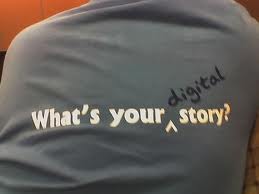The Fondest Farewell
Looking back at some of the readings and assignments we’ve done, I have had so much fun and learned a lot from this course, which is pretty much the best type of class to have: fun and informative. It seems too good to be true, but it really happened. I enrolled in the best class on campus with the best teacher…EVER! She even has a fancy award to prove it :) I can honestly say that I don’t think I’ve ever had so much learning about a topic as much as I did in this class. This is one of those classes that I’ll be able to look back on years from now and remember the activities we did, why we did them, and what I learned from them. How often can you say that about a class? I’ll be able to use many of the techniques I learned in my future classes.
So, getting back to the main point of what I’m supposed to discuss, I have learned a lot about literacy in general. I’ll be honest that I was one of those people who defined literacy as the ability to read and write, but I now know so much more about literacy and the other aspects related to it. There are multiple layers that I hadn’t even considered as literacy before. Literacy is more than just reading and writing, it’s doing. As we have learned throughout the semester and the group presentations we had, there are so many ways to do literacy and be involved with it: from texting to social media, from hacking to game playing, literacy is a whole world of involvement and learning.
Looking back at some of my older posts, I was able to see that I was able to think of literacy in different ways based on some of the articles we read, such as Szved, and got the chance to see how much literacy has changed after doing the interview with my grandpa and mother. Another source that helped me expand my thoughts on literacy was Keri’s post discussing twitter and the importance of sponsors. In fact, I liked this quote I said in blog #4 “The text books (and professors) are the agents, and we are the vehicle that retains the information we are learning and applying where needed. Sponsors are all around us, without us even realizing it”. We not only learn from getting involved with new ideas, concepts, social media outlets, etc, but we also learn a lot from each other. Sharing information, videos, blogs, etc. helps us learn and expand out minds better than learning from one source that we may end up coming across. Learning from each other is important and helpful. I almost forgot about the great videos we watched, the spelling bee one and that L.A. teacher who was awesome with his students. Teachers should be more like that guy, getting students to DO instead of just being there, following a boring routine. That is one of the important aspects I got from this class, it’s about DOING, not just being.
Being involved with my internship with Christina Fisher was the best experience. She allowed me to get involved with the students, helping them out a little bit, when I could, with their group presentations they were working on. She is a fantastic teacher and I, honestly, look up to her as a role model as to what I strive to be for my future students. Christina would give me advice on what’s good/bad to do in a classroom, such as too much talking/lecturing, and be honest about how the world of teaching works: it’s tough keeping up with grading, balancing your schedule/topics to teach, having enough personal time to go the bathroom or eat lunch sometimes, which get’s you “teacher’s bladder” (apparently that’s a real thing), and, some days, providing an equal amount of energy to each class. While it may seem like she was being harsh and telling me all the bad stuff, I didn’t feel that way. I thought it was nice of her to warn me of some of the difficulties that will be encountered during my teaching. It was meant to be more of a “heads up” than a scare tactic. As she said, the credential program will paint teaching as nothing but positive, but the reality, it’s difficult at times, especially the first 3 years, to find how you are most comfortable with your students and figuring out how your schedule will work. Some people have the dull experience of doing nothing but observing their entire 45 hours, but Christina got me involved as much as she could: I helped grade papers, input grades, read papers and provide commentary, and even got to do a mini teach session during my last week. It was awesome! This experience gave me an idea as to what it will be like to have my own class and be in front of them everyday. I loved interning with Christina and wish I could have had an entire year with her. She really did make my interning experience helpful and memorable. Thank you for recommending me to her.
Well, I guess I can’t ramble on for too long, so I will finally conclude. Thank you for a great semester that was fun, informative, memorable, and low stress. I learned a lot about literacy and was able to think outside the box that we are taught in middle school, or whenever it is we learned about literacy. I look forward to taking 431 with you in the Spring 2015 session. I hope you have a wonderful summer! Thanks again for everything you have shared with us.



 Website:
Website: